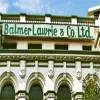- Hari Sankaran, Vice Chairman & Managing Director, IL&FS Ltd
Infrastructure Leasing & Financial Services Ltd (IL&FS) was incorporated in 1987 with the twin business mandates of commercialising infrastructure projects and setting up value-added financial services. The initial JV format included Central Bank of India, Unit Trust of India and The Housing Development Finance Corporation; IL&FS commenced operations in 1988. Today, the IL&FS Group has developed a pool of institutionalised resources and functional expertise in areas such as project management, project engineering, finance, risk management and environmental-social management that are strategic to infrastructure development activity. The company operates across sectors including airports, environment, ports, power, roads and bridges, sanitation, sewage, urban infrastructure and water. Hari Sankaran, Vice Chairman & Managing Director, IL&FS Ltd, shares some insights on the company´s infrastructure debt fund, restructuring equities and more with CW.
What is the company´s involvement in the construction sector?
The IL&FS Group operates projects across infrastructure sectors. In each of these projects, construction is managed directly by the sector verticals under the framework of their respective board of directors.
According to you what will be the total equity requirement for the construction industry in FY15?
Typically, projects are invested on a 30:70 debt/equity ratio. If we assume that 70 per cent of the project cost relates to construction and that Rs 100,000 crore of projects get implemented in 2015-16, it will mean Rs 70,000 crore by way of work contracts. This, in turn, will translate into an average working capital requirement of Rs 15,000 crore. Please note that this is speculative as we do not have specific data in this regard.
Can you update us on IL&FS´s infrastructure debt fund (IDF)? Till now, how much has been raised through IDF and what is the target for FY15?
To date, IL&FS´ IDF has successfully launched two schemes. The third scheme has been launched recently and is expected to be closed in the near term. The company is confident of deploying the monies raised in IDF in projects in the infrastructure sector. It has successfully deployed the funds raised in Scheme 1. IL&FS IDF primarily works on third-party projects.
What is the planned disbursement for FY15? According to your assessment, which sector will be the major beneficiary?
Disbursements within the year are planned to support our projects. In the current fiscal, the company is hopeful of commissioning at least four infrastructure projects across three sectors: road, power and waste management.
You have first-hand experience in managing a smart city project. Do you think funding smart cities is a profitable proposition as far as return on investment is concerned?
By definition, city development projects are long-term initiatives of over 10 to 15 years. They will require significant support from the sponsor. Given the rapid urbanisation taking place in the country, we don´t see any problem on the demand side in the long term. In the short term, however, these projects may require support to generate the economic momentum required to take them forward. IL&FS is currently associated with one city project and will seek to stabilise this initiative in the current fiscal.
Meanwhile, debt-laden construction players are a matter of concern. Do you think RBI in its guidelines is more lenient towards them when it comes to recovery?
RBI has stipulated a framework for the treatment of stressed assets. This framework is currently being used to work out recovery strategies for stressed assets. It is clearly in the interest of all stakeholders to ensure that the implementation capacity is not vitiated beyond a point. Promoters who have adopted erroneous strategies will require to take on the burden of rectifying the situation and not impose the associated cost wholly on the financial system.
Looking at recent trends, many Indian companies are raising overseas funds through innovative structures. Will this become more of a trend going forward?
It is part of the overall trend associated with globalisation as well as the benign interest rate regime internationally.
Interest rates are high now. Some private equity players might look at refinancing projects at a later date at the right cost. Can restructuring increase the equity returns of a project?
If interest rates were to fall, the benefit of any reduction in the cost of debt would partly benefit equity. Given that returns on equity in infrastructure project are back-ended, this would provide a welcome fillip to the sector.
As a project finance firm, what are the areas or sectors that will have substantial investment?
These will include railways, roads, energy, logistics, telecom and waste management.




















